After dreaming about building this 1967 Ford Mustang into a classic pony car powered by a modern fuel-injected V8 since last century, the owner of this Ulster Park, New York fastback offers the unfinished project for sale. A new owner can get this interesting project over the finish line or go another direction. Ironically the 34+ year-old “’89 or ’90” 5.0 has aged about ten years longer in storage than the ’67 Mustang’s age when seller acquired the 200-mile motor in the ’90s.
The Mass Airflow 5.0 began in model year 1989 and the seller’s computer and harness dates from a Speed Density 5.0 from ’88. There were MAF conversions back in the day, and if all else fails, more than one modern aftermarket 5.0 Engine Management System can get the job done. While 225 HP and 300 lb-ft of torque doesn’t sound like much in today’s world of 700+ HP supercars, it will do just fine in this 2700 lb pony. The sky is the limit on 5.0 performance if you get bored, and the same goes for suspension and brake upgrades for the popular ’67-’68 ‘stang.
A prior owner swapped in some upgraded parts from yet another Mustang including tilt-away steering column, a snazzy center console, and ’69 Mustang front disc brakes and spindles, according to the seller. As everyone knows, fuzzy dice increase horsepower by at least 10 percent.
Rust will be part of the story on this Empire State classic. Many parts have been replaced, and the seller does a nice job of listing them and identifying which were Ford parts and which came from the aftermarket.
What looks like newer fuel lines (supply and return) suggest some work’s been done to supply the 5.0 which sends excess fuel back to the tank. In good shape, the stock 5.0 fuel system can support up to 400 HP and the Mass Air Flow system gladly throws more fuel to match increases in airflow created by common modifications. Check out more pictures and a well-crafted listing here on eBay, where at least five bidders have the market value on this long-parked pony over $16,000. Unlike GM, Ford went to overhead cams after putting the vaunted 302 cid / 5.0 L V8 to pasture. Advantages of the pushrod 5.0 include smaller packaging, simplicity, and proven pathways to performance. Would you carry on with this EFI 5.0 or take this pony in another direction?
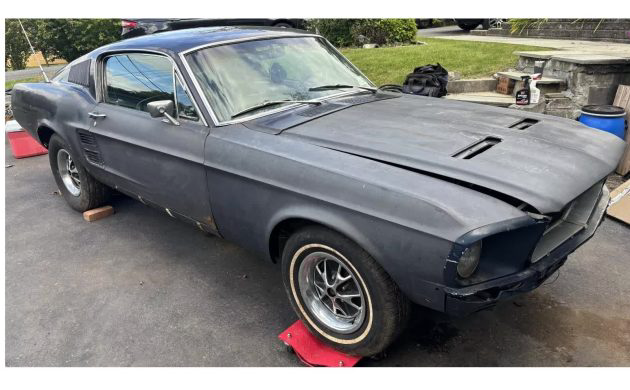
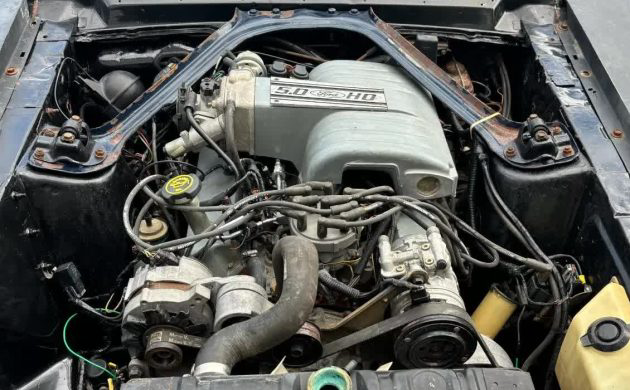
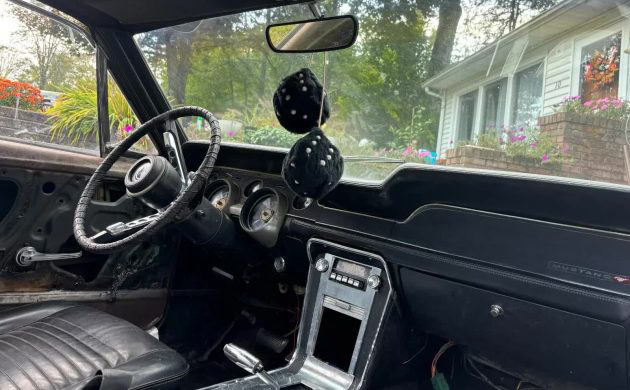
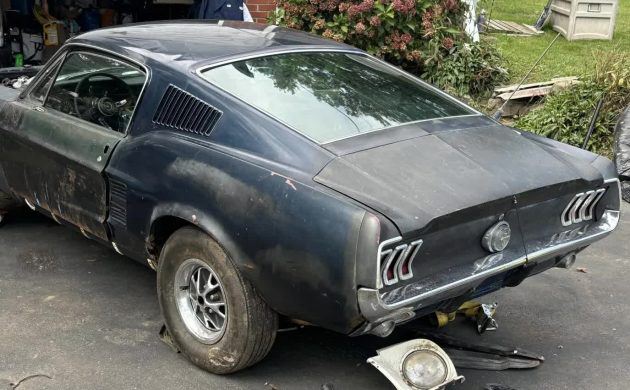
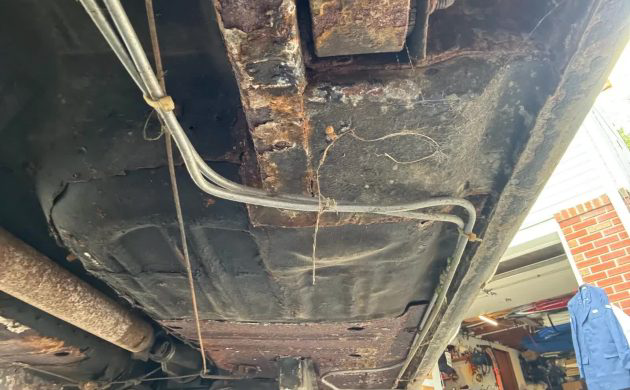

T5 conversion, and 3.55s would really move this lightweight.
Parts car, the floorboards, and possibly the frame is gone. What else lurks beneath?
Correct me if I’m wrong, (as I’m sure someone will) but I don’t believe that a ’67 Mustang only weighs 2700 lbs. when a ’64/ ’65 V8 Chevy 2 weighs about 3200 lbs.
You’re right, should be just shy of 3000
https://over-drive-magazine.com/2023/05/31/1967-ford-mustang-fact-sheet/#:~:text=1967%20Ford%20Mustang%20Facts%20%E2%80%93%20Chassis%20Features&text=Hardtop%3A%202606%20lbs.,Convertible%3A%202768%20lbs.
I stand corrected. (Although I still can’t believe that it could weigh 500 lbs less than my ’64 V8 Nova 400. That weight was certified by NHRA.)
I stand corrected. (Although I still can’t believe that it could weigh 500 lbs less than my ’64 V8 Nova 400. That weight was certified by NHRA.)
I made a post, but got an error 403.
I’m going to shorten it for the second round.
I think the site for Mustang facts is not correct, because any engine selected does not change the weight. I find this hard to believe.
There are too many swaps, changes, additions and adaptions on this vehicle. This car also needs (per the seller’s admission) a bevy of structural and cosmetic body repairs. The lines that were installed look poorly done, kinked to nearly being collapsed at the “S” bends.
This is nothing more than a high-priced Frankenstang.
I hadn’t noticed that. Doesn’t make a whole lot of sense that one with a 6 cylinder and a 3 speed manual would weigh the same as one with a 390 and a C6. Me thinks something is amiss.
It’s hard to say on the weight. Wikipedia lists the ’67 Shelby Cobra Fastback at 3241 lbs. https://en.wikipedia.org/wiki/Shelby_Mustang
Of course, you would have to weigh the car yourself to be sure. Most websites use apps that are not based on accurate measurements. They rely on manufacturer’s specs for each vehicle. And we all know that this could be inaccurate (on purpose or not),
Myself, I have never selected a car by its weight.